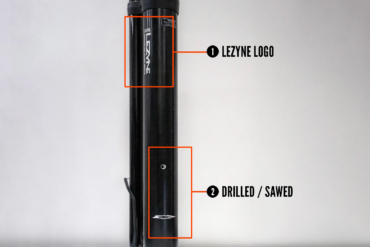New York City has been experiencing a lot of fires lately.
Just a month ago, a sudden blaze consumed an apartment in Brooklyn, killing three people. The fire was attributed to an e-bike’s lithium-ion battery — and it’s not the first time. This year, the New York City Fire Department has recorded 243 fires, 124 injuries, and 17 deaths related to e-bike batteries.
Yet the problem isn’t limited to New York. Deadly e-bike fires have now occurred around the world, from San Francisco to London to Australia. Many public and private organizations have called for increased regulation to address the problem.
That hasn’t stopped some New York landlords from banning e-bikes from their buildings, preferring to avoid the risk altogether. If the fires continue, that fear of e-bikes will only become more prevalent, said Bob Passmore, a department vice president at the American Property Casualty Insurance Association.
“These fires can happen anywhere, not just in high-density areas,” Passmore told GearJunkie. “How many events like this will it take before it impacts property owners in general? It’s hard to say. But we know it’s a significant concern.”
Fact check NYC Fire Code regarding e-bikes
byu/GuardRevolutionary inebikes
‘It’s the Battery’
To be clear, e-bikes themselves aren’t a problem.
But many of their lithium-ion batteries, also found in laptops and smartphones, have the potential to overheat or malfunction, even when not actively charging. That can ignite fast-spreading fires with little warning. In some instances, batteries have erupted in flames while positioned close to doors or windows, sometimes trapping people inside their apartments.
For landlords, that has resulted in additional costs from insurance companies concerned about the problem, said Michael Johnson, the communications director for the Community Housing Improvement Program, which advocates for thousands of owners of rent-stabilized properties in New York.
“Storing the bikes really isn’t a problem. It’s the battery thing,” Johnson said. “The best solution would be a multi-prong strategy for making sure we’re charging e-bike batteries safely … but I don’t think there is a simple fix.”
Johnson said the lack of government intervention has led to higher insurance premiums — already a problem in a city with skyrocketing housing and insurance prices. So it shouldn’t be surprising that some landlords would try to avoid allowing the storage of e-bikes on their properties.
“Affordable housing in New York is seeing the most significant increases in insurance premiums, and those are the places with workers more likely to have e-bikes,” Johnson said.
“We don’t view this as a tenant-versus-property-owner issue. We think the government needs to step in with some level of policy to make sure these buildings are safe and the tenants have access to e-bikes if they need to.”
Regulations and Safety Certifications
Some federal agencies and local governments have begun taking steps to curb e-bike fires through regulation.
In September, New York City banned the sale of uncertified e-bikes and started a trade-in program to provide certified batteries for free or at low cost. A year ago, the U.S. Consumer Product Safety Commission called on manufacturers, retailers, and distributors of e-bikes to comply with standards from UL Solutions, which certifies products for safety.
But even at bike shops that only sell certified batteries, the fear of fires and worry about landlords has started to impact sales, The Gothamist reported.
“We’re fighting uphill against negativity,” Shane Hall, who works at Bicycles NYC, said in the story. “I’ve had some clients, unfortunately, that had to sell their bikes because the building said, ‘OK, fine, I’m glad your bike’s safe, but we’re not allowing anybody’s bikes in.’”

What Bike Owners Can Do
For consumers, ensuring their e-bike’s battery has received a safety certification is the first step to preventing a fire. Safety certification organizations like UL Solutions allow e-bike makers to include a label showing the product has undergone testing, for example.
“We want people to purchase high-quality devices,” Chief Fire Marshal Dan Flynn said in a November release. “Make sure they have been certified at a recognized testing laboratory such as UL. Don’t go for the cheapest product.”
If bike manufacturers and government officials can’t figure out how to regulate the batteries, the danger of e-bikes will only increase, said Heather Mason, president of the National Bicycle Dealers Association.
“The bicycle industry needs to take immediate action,” Mason said. “If we do not address the core issue, we may see this propel to something beyond our control.”








